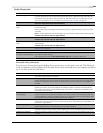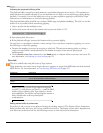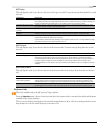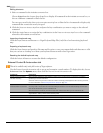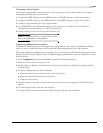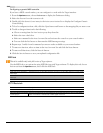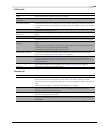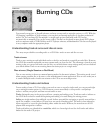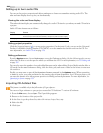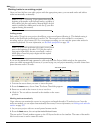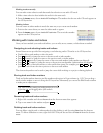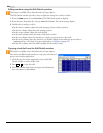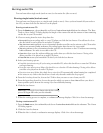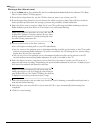
19
CHP. 19 BURNING CDS
CHAPTER
351
Burning CDs
You created your project in Vegas® software, and now you are ready to write the project to a CD. With the
CD-burning capabilities of Vegas software, you can place and arrange audio files to produce professional
audio CDs. You can burn CDs for multiple- or single-track projects and build audio CD layouts
automatically or manually. You can also create video CDs that can be played in many home DVD players
and on computers with a CD-ROM drive and VCD player software, and multimedia CDs that can be played
in any computer with the appropriate player.
Understanding track-at-once and disc-at-once
Two ways are provided for recording audio to a CD-R disc: track-at-once and disc-at-once.
Track-at-once
Track-at-once writing records individual tracks to the disc and results in a partially recorded disc. However,
the CD-R disc remains unplayable on most systems until you close the disc. The advantage of track-at-once
writing is that you can record tracks onto the disc as you finish them versus waiting until you have finished
your whole album. Track-at-once writing burns the entire project as a single track.
Disc-at-once (Single Session or Red Book)
Disc-at-once writing is the most common burning method in the music industry. This writing mode is used
when creating a master disc to be sent to a disc manufacturer for mass replication. Disc-at-once works just as
it sounds. Multiple tracks of audio are written to the CD in one recording session.
Understanding tracks and indices
You are ready to burn a CD. If you plan to use track-at-once to record a single track, you can proceed right
on to writing the entire project to a CD. However, you are more likely to set up tracks—and perhaps
indices—within your project and burn several tracks at once.
Tracks distinguish songs in the project and have a starting and ending point. Tracks are used to indicate to
the CD-R device where to mark the beginning and ending of a track during the writing process.
Indices are single markers that subdivide a track. Indices are useful for navigating to specific areas within a
track. For example, a sound effects CD may have one track of breaking glass. The track is then indexed to
allow navigation to a specific glass-breaking effect within the track. However, be aware that not all CD
players allow navigation to indices.
Tracks and indices are identified in a track list, which is a chronological text list of all tracks and indices
defined in the audio CD project.
19



